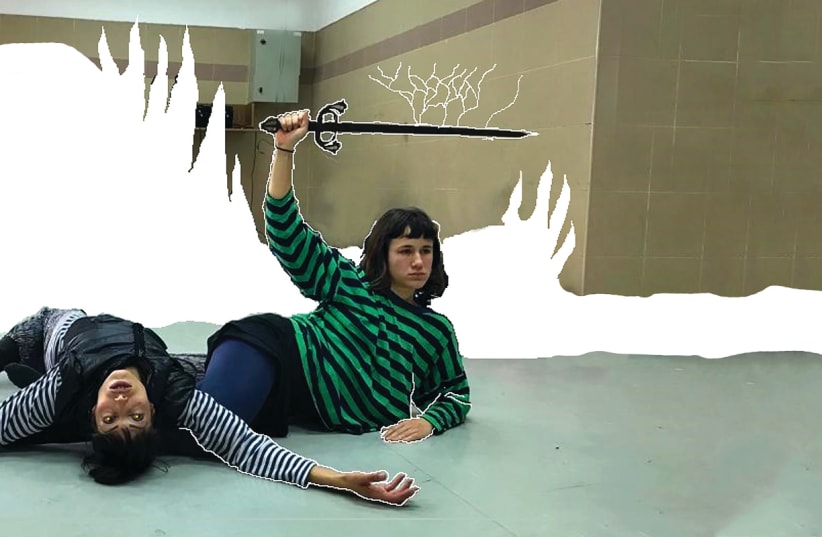Ten years ago, responding for a need for deeper discourse surrounding dance in Israel, choreographer Anat Danieli assembled a small group of female artists to meet and workshop their creations. The group was nomadic, meeting in different studio spaces around Tel Aviv, and occasionally, in Jerusalem. The topics discussed ranged from choreographic tactics to critical thought to personal stories and more.
Unbeknown to its members, this group was the first step toward the establishment of the Kelim Choreography Center, a concept that would grow and shift, and eventually inhabit a sprawling former army base in Bat Yam. Since those first days, Danieli and her team have continued to identify and meet the needs of their community, and as a results, largely influenced the tone of dance in Israel today.
The center’s flagship event, the March Hare Dance Festival, opens later this month for six days of performances, discussions, community work and festivities. Danieli called upon veteran curator Yair Vardi to team up on devising a program that would truly celebrate the accomplishments of Kelim.
“When we started to work on the festival, we had the thought that we could talk about the work of Kelim,” explained Vardi in a recent interview with The Jerusalem Post. Vardi, 34, is a choreographer, dramaturge, director, curator and lighting designer. He is the former co-artistic director of the Tmuna Theater, where he initiated such projects as the A Genre Festival (which will celebrate its 15th edition next month). “It’s a center that touches on a lot of different types of work. We wanted the festival to represent them.”
Each day of the festival will begin with either an open workshop or a communal warm up. In this way, Kelim breaks down the dichotomy between audience and performer and invites every guest to contribute to the event.
When establishing a dance center in a city that had never before hosted one, Danieli and her staff made a point of becoming local, or at least attempting to absorb the local atmosphere. Just as she had identified the needs of her peers, Danieli called upon dance practitioners to take a closer look at the people living in Bat Yam and see how they could use dance to contribute to their lives.
A number of inspiring projects came to life, including Ma’ase Gil, which brings movement classes to elderly citizens, as well as Toolbox, a joint creative project for adults with mental and developmental disabilities. Another incredible initiative of Kelim’s is the Mutual Gaze project, which invites vision impaired individuals to embark upon a creative process guided by professional dance artists.
“These three projects are very interesting,” said Vardi. “They meet once a week for a long time and they try to see what dance can give to the community. They give tools to people to cope with the world and can be used to make art – art that is uncompromised. It is community work that isn’t about making some show, but how we can make art from a meeting that isn’t artistic.”
Another major element of Kelim’s work lies in education. The festival will feature different projects that revolve around the concept of learning. “We have collaborations with schools in Bat Yam. Ofir Yudilevich has been working teenage boys with special needs, looking at how we can use our bodies to support one another. Matan Tawfik has been working with the students of the hospitality department of the Ya’ad High School, who will serve food throughout the festival. It’s an artistic food project that deals with giving,” explained Vardi.
And, of course, the program will also highlight the choreographers who have been part of Kelim over the past several years. Many of the presenting artists, such as Kim Teitelbaum and Moran Abergil, who will present both a community project and a creation entitled Ashtoret, came up through one of Kelim’s choreography programs. Six artists will premiere works created during residencies at Kelim this past year.
All of this comes together to compose the artistic practice present at Kelim. “Kelim is center for body and choreography. Inside Kelim, we research choreographic phenomena – not just in the artistic sense but in our bodies and in the world,” said Vardi.
The March Hare Dance Festival will take place in Bat Yam from March 26-31. For more information or tickets, visit kelim.org.il, or call 023-939-1069.
